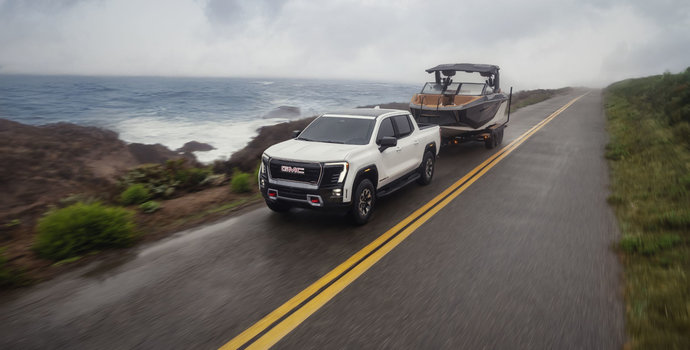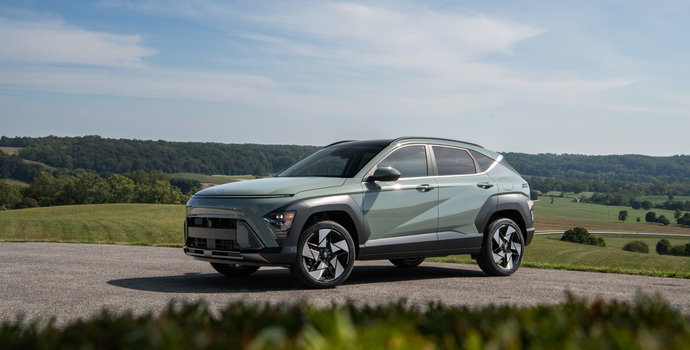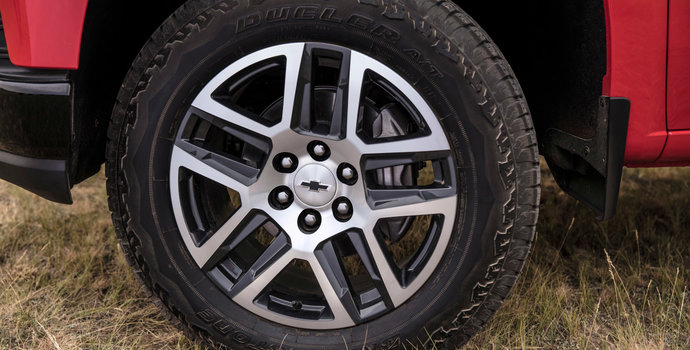Step 1: What Documents Do I Need to Buy a Car?
First, it’s essential to know what important documents are required to legally own a car. There are three main types that you will need which must be attained in this sequence: an Ontario Driver’s License, a valid car insurance policy, and your vehicle registration. A driver’s license is necessary to get car insurance, and car insurance is needed to complete registration of ownership.
1.1 Driver’s License
Depending on your home country and how much driving experience you have, you might be able to exchange your license for an Ontario Driver’s License. If you can’t exchange it, you might be able to get credit for the experience you already have. To exchange your foreign license or get credit for the experience, you will need supporting documentation. You will need three pieces of acceptable identification, your Canadian Citizenship card, your foreign driver’s license, and an original and official abstract document or letter. An abstract is also called a driver record, which is a government-issued document that includes information about the driver and their driver’s license. The abstract must be written within the last 6 months and include the following:
- Letterhead, logo, emblem, coat of arms, or symbol from the authority that issued your license
- Your legal name and date of birth
- The date you first got your license
- Your driver’s license number, class, current status (active or expired) and expiry date
- The date the abstract, letter or document was created
For the Driver’s Abstract, people immigrating from Japan can get their abstract from the Japanese Consulate, whereas people from the United Kingdom can get it from the Driver & Vehicle Licensing Agency (DVLA). If you want to see where to go for your home country, you can check Ontario’s DriveTest Centre guide here.
The Driver’s Abstract is not a necessary document to get a license. However, if you want to claim more than one year of driving experience in order to immediately obtain your full G license you will need one You can still get credit for your license experience to skip part of the Ontario Graduated Driver’s License program and get a G2, for example. You can read our full guide on how to exchange your foreign license here.
1.2 Car Insurance
Before you can get Car Insurance in Ontario you must have a Driver’s License. After that, you will need to provide only a few types of documents and information:
- The driver’s license number for everyone in your household who would use the car
- The make, model, mileage and registration number of the vehicle you want to insure
- Certificate of any driver’s education or safe driving completed in the last 3 years (optional if you want a better insurance rate)
You can also submit your previous Canadian driving record (international driving experience is not taken into account). Canadians with previous insurance policies can also submit official letters from previous insurance companies to act as records of your good driving experience, but odds are as a new immigrant to Canada you will not have any such experience in the country to use.
1.3 Vehicle Registration
To finalize your legal ownership of any vehicle you buy, you have to register it with the government of Ontario. To register your vehicle, you will need the following:
- Your driver’s license and the 15-digit registrant identification number (RIN) on it
- Proof of a valid and current insurance policy
- Certificate of sale and ownership title also known as the pink slip
- License plate number
If you are buying a new vehicle from a dealership, they will usually file the vehicle registration for you. If you are buying a used vehicle from either a dealer or a private seller you will also need to include the Used Vehicle Information Package (UVIP), Safety Standards Certificate, and Drive Clean Emissions Test (for some heavy commercial vehicles) You can find more information in our guide on how to buy used cars here.
Useful Tip!
There are a number of Canadian and Ontario websites and services to help you settle into living in the province, including help getting a driver’s license.
Step 2: Should I Buy a New or Used Car?
When you start thinking about what vehicle you want to buy, the biggest thing to consider is whether you want to buy a new vehicle or a pre-owned one. Each have their benefits and drawbacks:
- Price: new vehicles will be more expensive; used vehicles have much more affordable selling prices.
- Payment: new vehicles can be leased, financed or paid in full; used vehicles cannot be leased, have fewer opportunities to get financing, but are easier to buy outright because they’re cheaper.
- Warranty: new vehicles come with warranties as standard so you have coverage for defects and maintenance; only certified pre-owned vehicles will come with a warranty, otherwise you will have to pay extra for extended warranty.
- Condition: new vehicles are in brand-new condition, so any defects are covered by warranty; you will likely not know the full history of the used car and its wear and tear or mechanical issues.
- Whether to buy: new vehicles can only be purchased at a dealership; used vehicles can be bought from a dealership or private seller.
- Features: new vehicles will have the latest features, options, tech and safety; used vehicles will have older features, options, tech and safety.
- Incentives: manufacturers offer deals on new vehicles; used vehicles will be priced by the dealership or seller.
There are advantages for new Canadians who are looking for a new vehicle. Although the cost is higher, it’s offset by the incentives, financing and leasing options making the payments more manageable. But for newly arrived immigrants, there may be a waiting period before getting approval for financing (see section #4 below). A used car at a much lower cost may be the best choice to begin with, if immediate use of a vehicle is necessary.
You can read our complete guide on the car buying process in Ontario here.
Step 3: What’s the Difference Between Dealerships and Private Sellers?
In Ontario, you can buy a vehicle from 2 sources: a car dealership or an individual person acting as a private seller. If you want to buy a new vehicle, they are only sold at a dealership. Used vehicles can be purchased from either a dealership or a private seller. Here’s how they work:
3.1 Dealerships
A dealership is a business that sells cars. So they follow a sales process which involves making at least a minimum profit. Here are some unique elements you will experience buying through a dealership:
- Pricing – things like MSRP, sticker price, invoice pricing, all-in pricing, fees, taxes, etc.
- Financing – leases and loans will be worked out based on your credit
- Selection — dealers will have many different vehicles to choose from (new or used, different brands and models, etc.) so you can shop around
- Certified Pre-Owned — used cars with better quality and reliability due to fully documented history, also more expensive
Bargaining a final price is not necessarily unique to the dealership experience, however, negotiating any financing, warranty, protection plans and other additional costs or terms are.
3.2 Private Sellers
A private seller can only sell a used vehicle. Buying from a private seller is a less formal process where they can decide to sell their vehicle for any price they want. Also, there are no financing options, no extra fees and no special pricing or promotions. Here’s what you can expect from a private sale:
- Condition — you get the vehicle in the condition the owner chooses to sell it, good or bad
- Inspection – as a private sale buyer, it is only your responsiblity to properly inspect the vehicle
- Purchase – to buy the vehicle you will have to pay the full amount, we recommend going through a bank to reduce the chances of being scammed
- Tests – a seller is not obligated to provide you with Safety and Emissions test certificates, so you may have to pay for them yourself
Private sellers are selling a car that they’ve owned themselves and want to make more money than they could get by trading it in to a dealership. They may not be as concerned with making high profits because they’re not a business, so you might get a better deal. But keep in mind they also don’t have a reputation to worry about and may be less willing to disclose any issues with the car.
Did You Know?
You can read the Canadian Automobile Association (CAA) study conducted that thoroughly examined all the costs of owning a car to help you get an idea of how much money you’ll need to buy and own a car.
Step 4: How Does Leasing or Financing Work?
When you buy a new vehicle, you have options of paying for it: you can take out a lease, finance it with a loan or you can buy it outright on the spot with cash. That last option is straightforward, but how leases and loans work are more complex. You can find information on the benefits of leasing or financing a car here, but here’s more on how they work:
4.1 Credit
Although there isn’t a specific number to reach, you need a decent credit score to get approved for a lease or loan. A credit score is essentially a rating of how responsible you are with managing your credit and how much of a risk you are to the money lenders.
For immigrants who just arrived in Canada, you will have no credit history and that makes it difficult to take out a large lease or loan on a vehicle because the lenders will view you as unknown and risky. There are multiple ways you can build your credit score, but here are some of the simplest ways to get started:
- Secure Credit Cards — they are a safe way to establish your first credit history as trustworthy
- Bill Payments — always pay your regular bills (rent, energy, mobile phone, etc.) on time and in full
- Smaller Loans — take out smaller loans and regular credit cards and pay them off on time and in full
- Get a Mobile Phone - sign up for a monthly plan as many Canadian phone providers will report your payments to the credit bureaus
- Report Your Rent - you can ask your landlord to report your monthly rent payments to show payment history
It takes about 3-6 months of activity for a credit score to be calculated. However, even if you do all the right things to build a good credit history,it can still take more than a year before you will have a credit score good enough to be approved for car financing. If you cannot wait that long, another option would be to save up a few thousand dollars to buy an older used car for cash to use until you can get approved for car financing.
4.2 Loans
Car loans are by far the most common way that all Canadians pay for a new vehicle. Let’s say there’s a new car you want to buy that costs $20,000, but you only have $4,000 saved up. If you put the $4,000 towards the purchase as a down payment and then take out a loan for the $16,000 balance, here’s how paying off the loan works:
- Length – longer loan terms mean lower monthly payments but more total interest paid
- Interest Rate – the exact rate charged depends on your credit score and the length of the loan
- Incentives – manufacturers sometimes offer special incentives for lower loan rates than usual
Loans average around 6years in length, though you can pay it off sooner if you want to save from having to pay more in monthly interest. When you take out a loan to pay for a new car, you own the vehicle and can do what you want without any limitations or penalties.
4.3 Leases
When you lease a new vehicle, you don’t actually own it. You are essentially renting it from the dealership. Leases are usually shorter than loans, but by the end of the lease, you either have to then buy the vehicle or walk away from it. If you walk away, the car is returned to the dealership and you can lease or buy another one.
In comparison, your monthly lease payments would usually be lower than a loan payment to buy the same vehicle, which is a big benefit for leasing. This is because instead of paying for the full value of the vehicle you are only paying for how much value the car loses over the term of the lease. Here’s how it works:
- You lease a new car that costs $20,000
- At the end of a 3-year lease, the car is worth $12,000
- Your monthly lease payments cover the $8,000 in value that the car lost over the 3 years
There are other factors that affect the amount of your lease payments, such as interest, length of the lease and other terms you negotiate such as the annual kilometre limit. You can find out more about how lease payments work in our guide here.
Useful Tip!
If you know someone who has a good credit score and trusts you enough, like a close friend or relative who has lived in Canada for longer, you can have them co-sign your credit application. It can be risky for both of you, but as long as you both know what you’re getting into it can be a viable solution.
Step 5: Are There Programs To Help New Canadians Buy A Car?
Yes, there are programs to assist new Canadians with the purchase of a new car. Canadian banks and car manufacturers recognize the obstacles immigrants face when buying new cars and the importance it plays in helping them settle into their new lives and jobs. So you will find programs that usually apply on the first car you buy or within three years of getting your citizenship.
Banks, such as the Royal Bank of Canada (RBC) and Scotiabank have programs to help new Canadians with no credit history still get approved for loans. The issue with these programs is the loans are more restrictive - the maximum loan allowed is lower, they require a bigger down payment in cash, or they have higher interest rates. But if that’s one of your only choices it might still work for you.
Almost every car manufacturer that sells new vehicles in Canada have some type of discount or incentive for new Canadians or first-time car buyers. You can either get an amount discounted off of the vehicle price that’s usually between $500 and $1000 or they will have special financing programs through the banks to make it easier to get approved loans.
Summary
Immigrating to a new country is not a simple task. There are many processes to learn and depending on multiple factors, buying a car can sometimes be complicated and confusing. We hope this guide will help make each step easier to achieve.
You might also be interested in these guides:
Guide to Ontario Driver’s Licenses
How to Buy a Car in Ontario?
Ontario Car Insurance Guide
How to Buy a Car with Bad or No Credit?
How to Exchange a Foreign License for an Ontario Driver’s License







